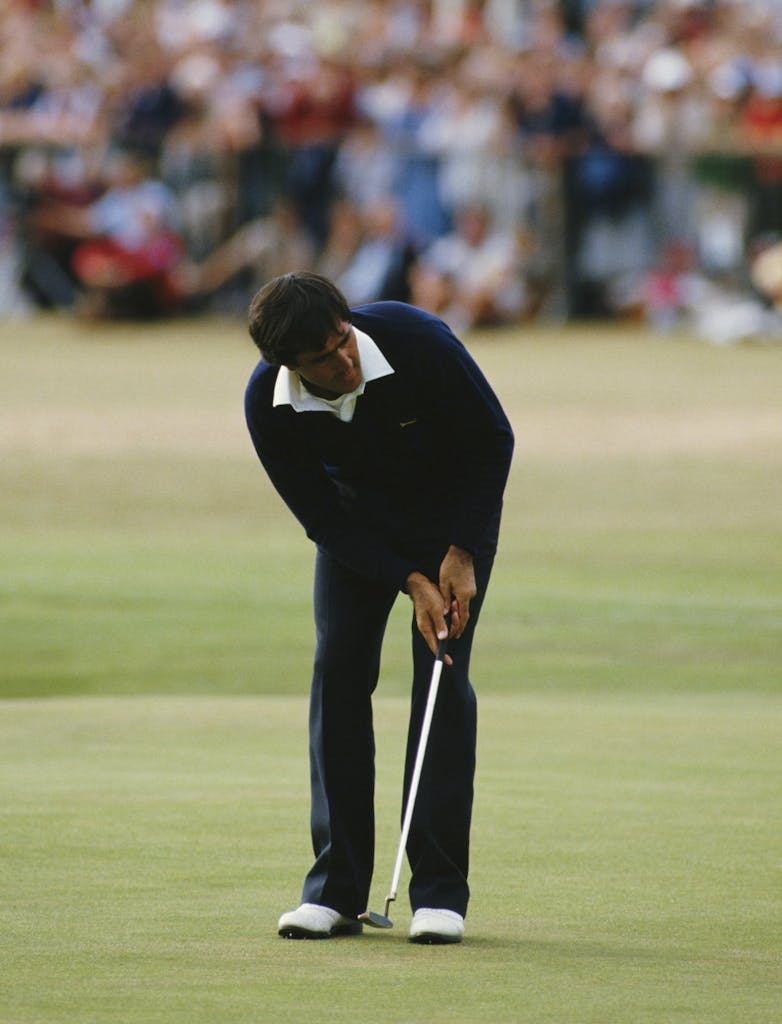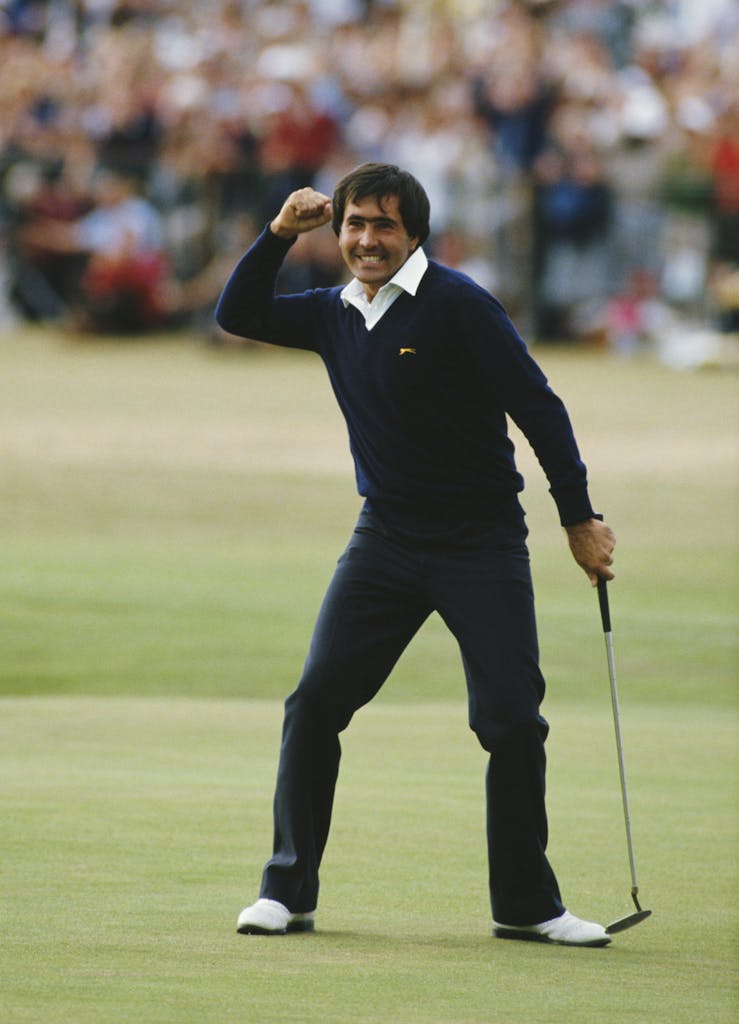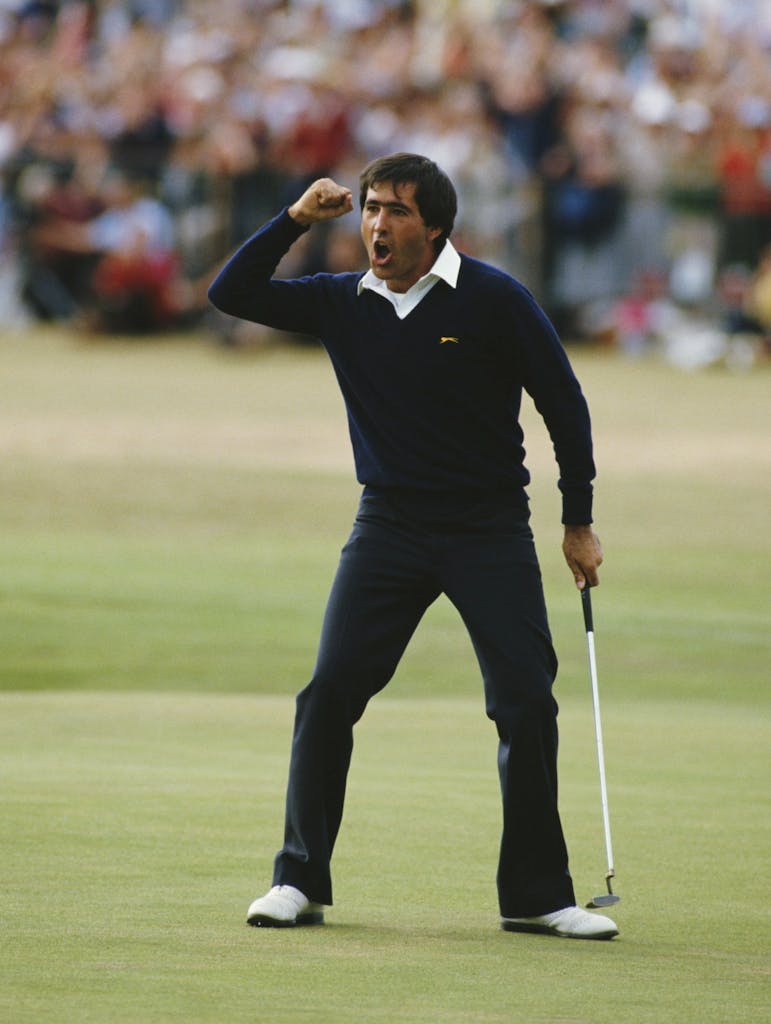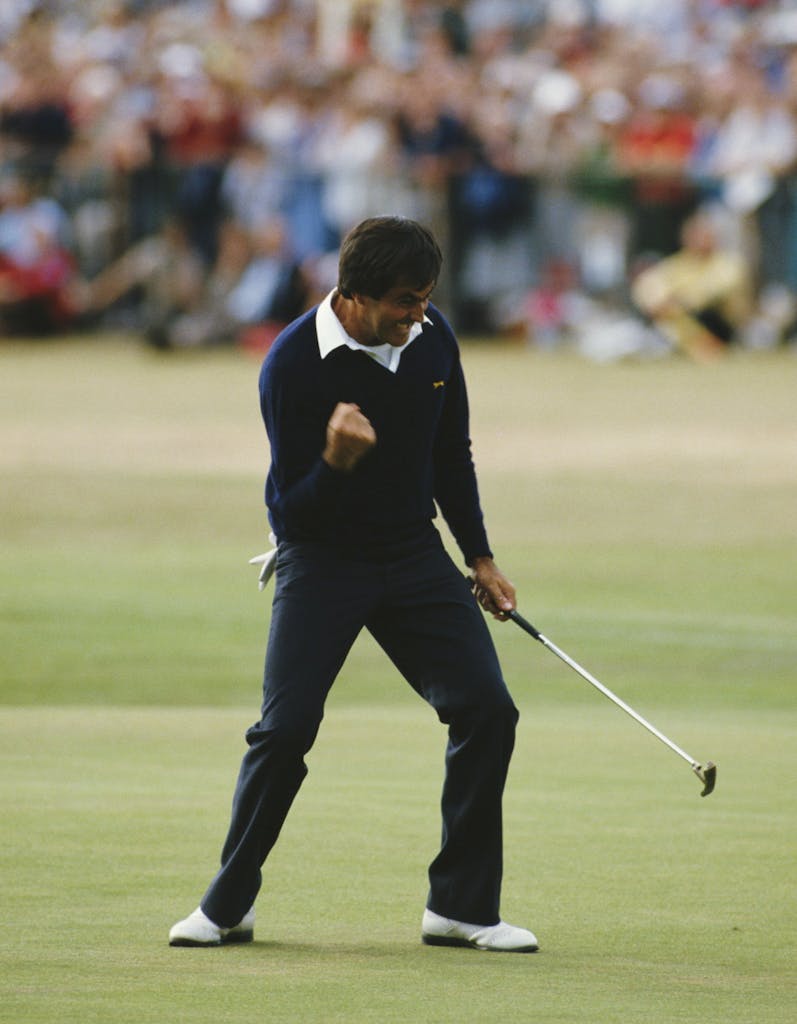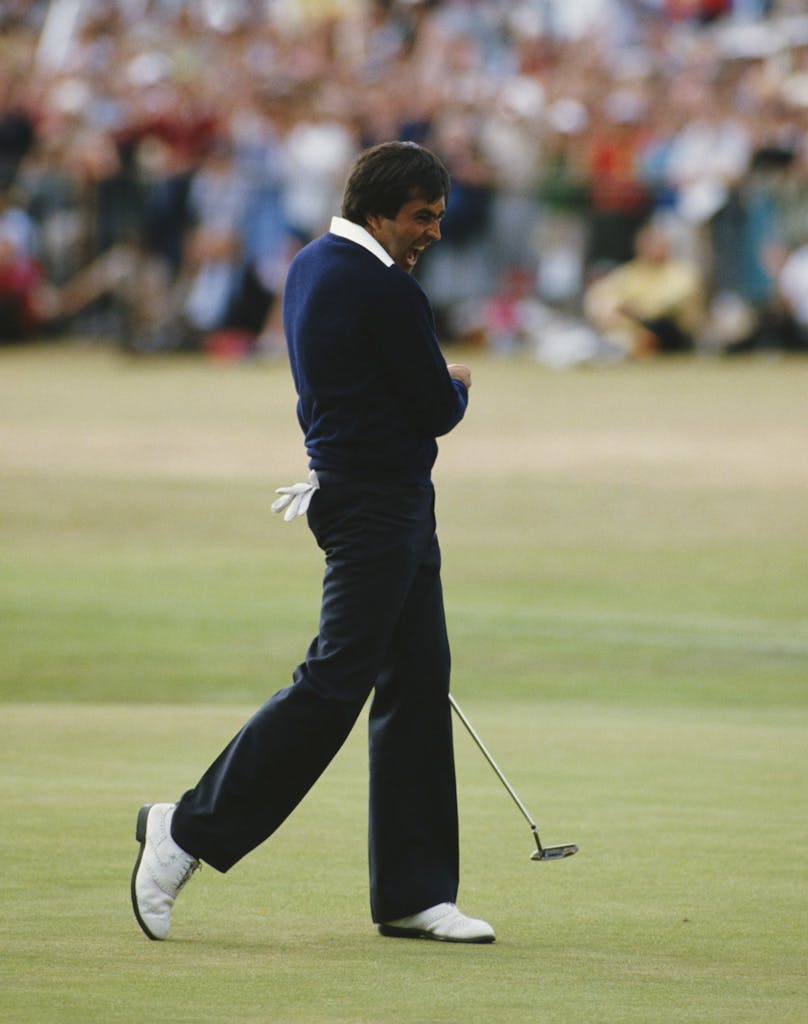A golfer crouches over the ball, his putter in hand. His playing partners, caddies and officials stare intently as he prepares to pull back the clubhead. A crowd of hundreds lines the outskirts of the green.
The location is familiar – the Old Course at St Andrews in Scotland. However, it is neither Tiger Woods aiming for the Claret Jug, nor Zach Johnson, winner of the last Open at St Andrews.
The year is 1891 and Willie Park is about to putt in pursuit of his third Open Championship victory. Rival Andrew Kirkaldy looks on from the left. The record books show it was the latter’s brother, Hugh Kirkaldy, who would eventually emerge triumphant that year.
It is a stunning photograph, ensuring that those who competed at golf’s spiritual home more than 130 years ago are more than names in an archive.
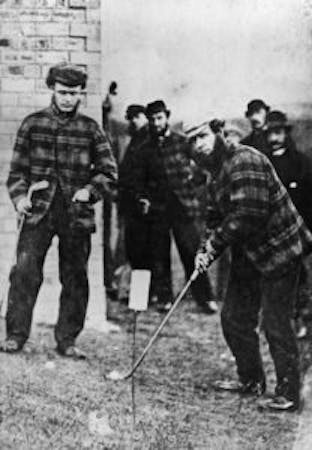
Defining collection
The photo is one of hundreds of thousands in Getty Images’ archive, which stretches back through the history of the famous Open Championship. It is unquestionably the defining collection of golf’s most storied competition, which this year will return to St Andrews as it is staged for the 150th time.
David Cannon, Getty Images’ most senior golf photographer, has since 1982 captured every Open Championship and all its champions, from Tom Watson 40 years ago to 2021 victor Collin Morikawa. He is acutely aware of the significance of the collection from a historical standpoint.
“I’m biased, of course, but we [Getty Images] have built the most unique collection of golf imagery in the world,” said Cannon, who was recently awarded a Lifetime Achievement Award in Photojournalism by the PGA of America. “Without question, we have the most easily accessible and comprehensive collection.
“The breadth of imagery is incredible in itself, but it’s also the technology and metadata that sets us apart, as you can find exactly what you want from more than 100 years’ worth of content in a matter of seconds.”
Iconic moment
Getty Images’ archive, based near the Olympic Park in East London, holds 135 million images dating to the beginning of photography. As well as sport, the collection houses a wealth of socially significant historical photos, footage and prints.
Among the collection is perhaps the most iconic image in the Open’s history, captured by Cannon in 1984. As Seve Ballesteros holed his famous putt on the 18th at St Andrews, the photographer achieved his own championship-winning moment as he caught the charismatic Spaniard’s fist-pumping celebration with a sequence of shots that remain his favourites. They are the defining images of Ballesteros, and the player himself, who sadly passed away in 2011, loved them so much that they became his brand logo. He even had a silhouette of the moment tattooed on his arm.
“Seve was really appreciative of what they represented,” said Cannon, who became a close friend of Ballesteros and his family.
The story of how these photos journeyed from Cannon’s camera to major newspapers and magazines around the world – and, ultimately, Seve’s arm – is illustrative of the huge technological changes that have transformed sports photography and the media more broadly in the 38 years since.
“I was really excited about the shots I thought I’d captured, and I drove through the Sunday night from St Andrews to get home,” Cannon recalled. “I was just hoping that the exposure and focus were right, and I already felt lucky as I was close to the end of a roll of film!
“It wasn’t until the Monday morning that I saw them for the first time. Nowadays you will see your photo in a couple of seconds, and it can be around the world in under a minute.”
Technological changes
Cannon considers two technological changes as key to Getty Images establishing and maintaining its position as the most esteemed source of visual content in the world.
First was the decision taken in the late 1980s by his then employer, AllSport –acquired by Getty in 1998 – to invest heavily in the first Hasselblad digital portable transmission machines, which transformed the global distribution of imagery.
Then, in 2002, the group made the bold decision to switch completely to digital cameras just months after manufacturer Canon introduced one of their first really effective professional digital cameras, the EOS 1D.
“A photographer on tour with England in Pakistan in the early 1980s might be able to send four images in a day via a phoneline,” Cannon said. “It could take 20 minutes to send a black and white photo, and if the signal broke, you’d have to start again. Using the Hasselblad machines, we became the hub for live pictures during the Italia ‘90 World Cup.”
Capturing history
Cannon has specialised in golf for more than four decades, having played to a high amateur level during his late teens and early 20s. The talent that saw him competing against peers Nick Faldo and Sandy Lyle would one day play an important role in capturing their great moments, as he believes his understanding of the sport has been hugely beneficial.
Having developed an interest in photography, his first ever assignment was an All Blacks rugby match in Leicester in 1978. Since then, Cannon estimates that he has taken 3.4 million frames while visiting 115 countries, attending golf’s biggest events as well as eight Fifa World Cups and four summer Olympic Games.
While Cannon regrets the decline of sports supplements and the use of evocative images to fill those huge double-page spreads, he embraces the central role that photography plays in digital media. Getty’s comprehensive archive appeals to today’s social media users, as well as offering a unique opportunity for rights-holders, commercial partners and their agencies to place contemporary stories in historical context.
Though it has been 131 years since Park’s putt captured, the role of the sports photographer remains crucial.
“We are capturing split seconds of history,” Cannon said. “Over the last 40 years my ambition has been to leave an important legacy to the sport. The ability to provide that huge archive to editors, enthusiasts and rights-holders puts us in the very privileged position of being custodians of the history of sport.”
